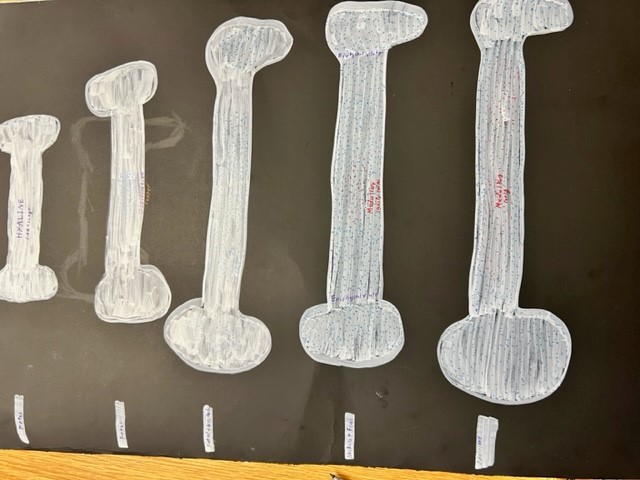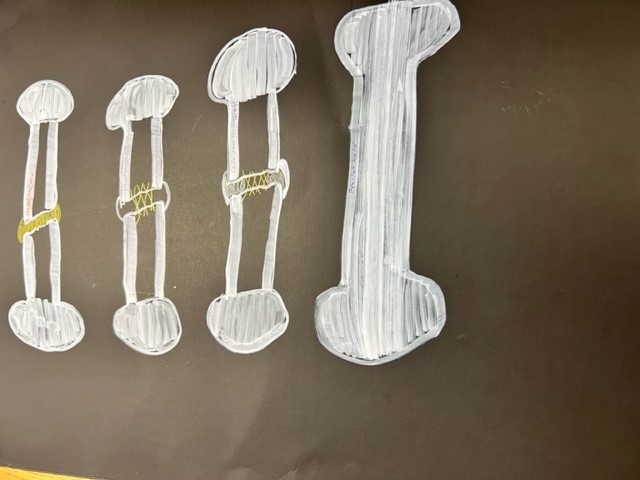

For this project I wanted to model bone growth and the process that happens to repair fractures. Unfortunately the best option that suited my skill was drawing. The first picture is the model of bone growth. I was working with limited supplies so I choose to use the white to model everything. In descending order the first drawing is hyaline cartilage. The next is slightly expanded as the primary ossification center appears in the center. The ossification spreads until it reaches close the end of the bones and then it occupies the ends of the bones creating the secondary ossification center. The epiphyseal plates are formed from the remaining hyaline cartilage which exist until early adolescence. The second image was harder to create as i needed colored paint markers but I did not own any. The first drawing has the fracture surrounded by a hematoma. Then the second one has the formation of blood vessels and spongy bone that bridge the gap. The third attempts to show the bony callus of spongy bone. The fourth shows the fracture that is fully healed.

The objective that Max covers in his project is “know the stages of bone development and repair.” He uses two drawings as his media to demonstrate bone growth along with the process of fracture repair. The first drawing shows bone growth throughout a person’s lifetime. The first bone (farthest to the left) is hyaline cartilage. The next one is expanded slightly to show ossification in the center. Ossification spreads until it reaches the ends of the bone, which creates the second ossification center. From the remaining hyaline cartilage, the epiphyseal plates are made. These plates exist until adolescence. I believe the last bone in the first image is after adolescence. The second image is four bones that show a fracture repair. The first bone (farthest to the left) is a fracture surrounded by a hematoma. The second shows blood vessels and a spongy bone fracture. The third bone shows the bony callus of the bone. Lastly, the final bone is when it is fully repaired.